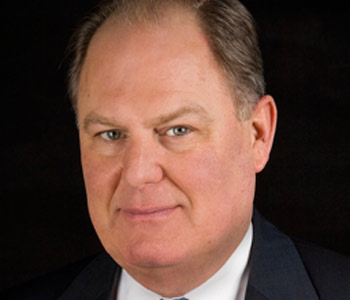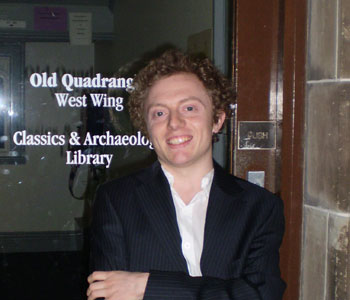Alex Krieger
City on a Hill: Urban Idealism in America from the Puritans to the Present
Harvard University Press
464 pages, 6 x 9 inches
ISBN 978 0674987999
The book’s primary intent is to portray the American inclination to experiment with forms of settlement, evident in both utopian and pragmatic efforts at reconceiving how and in what shape our towns, cities, and urban regions should grow. While not abandoning long-standing precedents of urban organization, Americans have commonly sought to improve upon the cities at their feet, or those from which they emigrated.
Aspirational approaches at community and city-building have served as the parallel to the political efforts to establish a republic dedicated to “life, liberty and the pursuit of happiness.” That post-revolutionary America expanded the frontiers of social and political institutions is widely acknowledged. That the reevaluation of old-world institutions and values would extend to how better to gather spatially in communities is less commonly understood. Each of the chapters explores an effort, cultural trend, or belief about what makes a good neighborhood, a better town, a more humane city, and about some longer consequences of proceeding to build such places. Setting out in search of utopia does not guarantee one’s arrival there.
The book ranges broadly across American history though without following a strict chronological timeline. It begins with Thomas Jefferson’s 18th-century determination to establish an egalitarian agrarian republic, and concludes with a fascination (encouraged by Google, Facebook, and other digital-world innovators) about the coming of an “e-topia.” Urban life becoming better, more palatable, even enjoyable, in “smart cities.” Cities becoming smart and smarter by the integration of informational technologies, data analytics, the “internet of things” and artificial intelligence. It is the current exemplar of a lengthy tradition of aspirational (and some would call naïve) ideas about perfecting places to live and to flourish in company with others.
Readers are welcome to proceed from the introductory chapter forward, though this is not necessary. It may be equally or even more enjoyable to enter the narrative via a particular chapter whose title, theme, or era of focus sparks that reader’s curiosity.
The book is an interpretative look at the characteristic patterns of settlement and attitudes towards cities and urban life that are identified with American urbanization. It seeks to foster an understanding of the cultural processes, entrepreneurial motivations, plans, and particularly the cultural idealism that has influenced the way Americans have chosen to spread out over the North American landscape.
A vast literature exists about American urbanization, often developed from a socio-economic perspective. Fewer studies focus on the instinct to keep reconsidering forms of human settlement. Much has been written to chronicle a perceived anti-urban attitude among Americans, identified by a persisting preference (until recently) among Americans for places away from rather than amidst the buzz of the city, especially the large city or the metropolis. The title of a recent book, Americans Against the City, encapsulates this view well.
But what if Americans have instead been intrigued by cities of their imagination, rather than those at their feet? What if their ambivalence about those monstrously expanding industrial-era cities led to reformist ambitions to rethink the traditional city for a new world? What if the arrival of the modern age, associated with the discovery of the Americas, necessitated planning towns and cities for a rapidly changing world and to modernize the old? Such questions were the book’s points of departure.
Historians have chronicled the prevalence of 18th and 19th century religious and secular utopias. However, the rethinking of forms of community and settlement patterns was far more extensive and varied. Examples include the Founders’ search for an egalitarian distribution of land to all citizens; the reoccurring idealization of the small town, as for example on behalf of early suburbs claimed to be as hospitable as towns, and then as the means of recovering from generic suburbia; the optimization of places for labor in company towns often placed away from town; the Olmstedian return of nature into the heart of the city; the conquest of the West following a Manifest Destiny ideology; Henry Ford’s acceleration of an “autopia,” the car claiming to solve the problem of the city by enabling us to leave it; and other utopian conjectures such as Walt Disney’s initial EPCOT dream and the 1960s new towns movement.
The book’s genesis is a course that I have taught for over three decades at Harvard University entitled The Evolution of the American City: Civic Aspirations and Urban Form. Not a historian by training, I come to the subject of American urbanization as an architect and urban planner, who in addition to teaching has practiced professionally in multiple American and international contexts. Characteristic of an architect’s tendency, my observations are biased by a focus on the built environment, but with a fascination to unravel underlying ideals that inspired what has been built.
The most propitious enticement for a browser may be the 32-page color insert of photographs, maps and drawings of American environments. A picture may not always be worth a thousand words, but it is easier to discuss places with representative images of those places, first as these places may have been imagined and drawn, then as they were being planned, and finally as they assumed three-dimension.
The images in the color insert are duplicates of more modest black-and-white versions that directly accompany the text. My exceptional editor, Ian Malcolm, argued that the book must foremost be for readers. Excessively illustrated books for Ian distract from the stories being told, as in the proverbial, oversized coffee table volume in which text becomes secondary to images, rather than the reverse. This, of course, is counter to the instincts of an architect whose eyes tend first to focus on the illustration. Thus, the book’s color insert became a compromise among author and editor, allowing this author to compose a few stories with images.
As an example, I juxtaposed each of the five monumental canvases of Thomas Cole’s 1830’s Course of Empire with five analogous moments in the life of Chicago’s 1893 World’s Columbian Exposition. Cole’s Transcendentalist-inspired intent was a warning against unimpeded progress at the expense of nature. This for him ultimately risked desolation, not of the natural world as we fear today, but of all that artificially built up progress; the fate of Imperial Rome. The Chicago’s World’s Fair was, of course, committed to an exaltation of human progress. However, as a temporal environment its evolution from a swampy field, to a wonderous architectural ensemble, to the demolition of that ensemble at the Fair’s conclusion, to its transformation into a pastoral park, replicated in three dimensions Cole’s haunting course of empire.
This juxtaposition is to help connect Cole’s warning to present environmental concerns. By the end of the 19th century the expectation of sustaining a “Nature’s Nation,” the focus and title of Chapter 2, had receded under the onslaught of industrialization. Cole’s prescient concern about the consequences of not heeding nature resonate today, more so than those architectural monuments of the World’s Fair, their ephemerality, indeed, supporting Cole’s and our anxieties about the despoiling of nature.
Another attempt at a visual story in the book is the 2-page spread with three images depicting an optimized place for labor. It could be viewed as a graphic summation of chapter 5, which discusses a tradition of locating a company town away from town, being today overturned by headquarters of companies returning to town centers. The images are of a canonical 19th-century mill town, a mid-20th-century suburban corporate enclave, and the new Amazon Headquarters, having recently relocated from suburban Seattle to its downtown.
My hope is that readers come away with two primary insights about the evolution of American city building. First, that Americans have rarely felt bound by traditional ideas about what constitutes a city. Instead, they have instinctively relied on an ancient notion—the city being a place inhabited by citizens, from the Latin civis, for citizen, and civitas, for the social body of citizens. This more general construct has produced some unprecedented environments, such as suburban spread that rankle those who define a city in a particular way, and has led to exaggerated accusations of cultural anti-urbanism.
Secondly, an inherent American idealism and optimism about a better future, has played an important and near continuous role in the creation of the metropolitan American landscape. The idealism may at times have been misguided or unwarranted, but instrumental nonetheless. It arrived with the arrivals from the old world, was fortified in concert with a body of ideals that became fundamental to the European Enlightenment, and intensified during the explosion of urban growth arriving with the Industrial Revolution.
The cities in America just taking shape, rather than old European cities needing to adapt (with considerable difficulty) to the cultural, political, and technological transformations of the seventeenth through the twentieth centuries, heralded the arrival of the modern age. And even during eras of ambivalence about the large city, such as during the massive suburbanization at mid-20th century, optimism about future possibilities still characterized innovations in the built environment.
At the dawn of the third decade of the 21st-century America is home to fewer optimists, much less utopians. That inherent idealism—embodied in the Constitution with the phrase “to form a more perfect Union”—is seemingly in remission. Concerns about growing social and economic inequalities; political partisanship and resulting inaction; climate change accelerating environmental harm; and even about diminished standing around the word, are subjects of near-daily conversations from living rooms to classrooms to board rooms.
Given its long gestation in a classroom, the book was not undertaken as a call for our old aspirational angels to spring forth again. However, as the chapters introduce each pursuit at constructing more perfect unions, at least in the shaping of towns and cities, readers may conclude that a return of American idealism may be useful in mitigating present anxieties. As we increasingly become, worldwide, an urban species, additional imagination with which to manage our expanding urban footprints will be necessary.




We don't put paywalls. We don't distract you with ads. We don't sell your data.
Please help to keep this running!